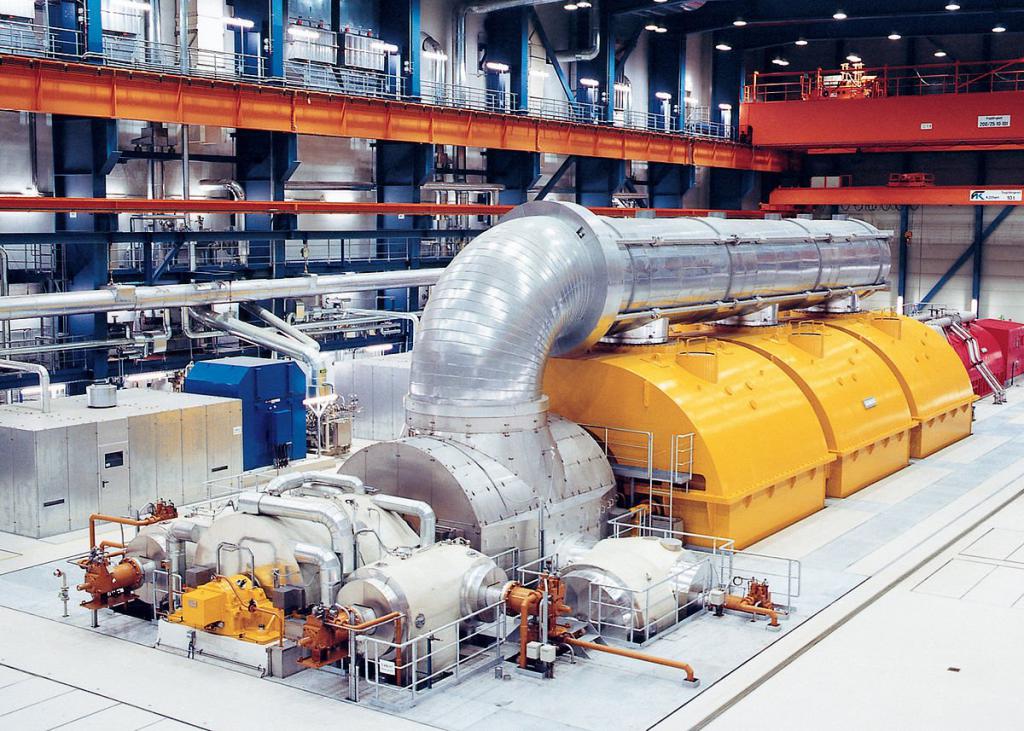A pressing issue in modern electric power industry is the loss of electricity, which are closely intertwined with the financial component. This is a kind of reserve for obtaining additional benefits, increasing the profitability of the production process. We will try to deal with all the facets of this issue and give a clear idea of the intricacies of electricity losses in networks.
What is the loss of electrical energy?
In the broad sense, energy losses should be understood as the difference between the revenues in the network and the actual consumption (useful supply). Calculation of losses involves the determination of two quantities, which is performed through the accounting of electrical energy. Some stand directly at the substation, others at the consumers.
Losses can be calculated in relative and absolute terms. In the first case, the calculation is performed as a percentage, in the second - in kilowatt hours. The structure is divided into two main categories due to occurrence. Total losses are called actual and are the basis for the effectiveness of the unit.
Where is the calculation performed?

Calculation of electricity losses in electric networks is carried out in the following areas:
- For enterprises generating energy and delivering to the network. The level depends on the production technology, the correct determination of one’s own needs, the availability of technical and commercial accounting. Generation losses are borne by commercial organizations (included in the price) or added to the standards and actual values for areas or enterprises of electric networks.
- For high voltage network. Long-distance transmission is accompanied by a high level of electricity loss in the lines and power equipment of substations 220/110/35/10 kV. It is calculated by determining the standard, and in more advanced systems through electronic metering devices and automated systems.
- Distribution networks, where the loss is divided into commercial and technical. It is in this area that it is difficult to predict the level of magnitude due to the complexity factor of binding subscribers to modern accounting systems. Losses in the transmission of electricity are calculated on the basis of the principle received minus the payment for the consumed electric energy. The definition of the technical and commercial parts is carried out through the standard.
Technical losses: physical causes and where they arise

The essence of technical losses lies in the imperfection of technology and conductors used in modern electric power industry. In the process of generation, transmission and transformation of electricity, physical phenomena arise that create the conditions of current leakage, heating of conductors or other moments. Technical losses may occur in the following items:
- Transformers Each power transformer has two or three windings, in the middle of which a core is located. In the process of transforming electricity from larger to smaller, heating occurs in this element, which implies the appearance of losses.
- Power lines. When transporting energy over distances, there is a leakage of current to the crown for overhead lines, heating of the conductors. The following technical parameters affect the calculation of line losses: length, cross-section, specific gravity of the conductor (copper or aluminum), energy loss factors, in particular, load distribution coefficient, graph shape coefficient.
- Optional equipment.This category should include technical elements that are involved in the generation, transportation, metering and consumption of electricity. Values for this category are mostly constant or taken into account through counters.
For each type of electric network elements for which technical losses are calculated, there is a division into idle losses and load losses. The former are considered a constant value, the latter depend on the level of skipping and are determined for the analyzed period, often for a month.
Commercial losses: the main direction of increasing efficiency in the electric power industry

Commercial losses of electricity are considered difficult to predict, as they depend on consumers, on their desire to deceive the company or the state. The basis of these problems are:
- Seasonal component. Underpricing of individuals on actually released electric energy is invested in the presented concept. For example, in the Republic of Belarus there are 2 reasons for the appearance of the “season” - this is the availability of tariff benefits and payment not on the 1st, but on the 25th.
- Imperfection of metering devices and their incorrect operation. Modern technical means for determining the energy consumed greatly simplified the task of the subscription service. But electronics or an incorrectly adjusted accounting system can fail, which is what causes the growth of commercial losses.
- Theft, underestimation of meter readings by commercial organizations. This is a separate topic for discussion, which involves various tricks of individuals and legal entities to reduce electricity costs. All this affects the growth of losses.
Actual Losses: Overall
To calculate the actual losses, it is necessary to add the commercial and technical component. However, the actual calculation of this indicator is carried out differently, the formula for the loss of electricity is as follows:
The amount of losses = (Income to the network - Useful leave - Flows to other energy systems - Own needs) / (Incomes to the network - Lossless - Flows - Own needs) * 100%
Knowing each element, determine the actual loss in percentage terms. To calculate the required parameter in absolute values, it is necessary to perform calculations only with the numerator.
What consumers are considered lossless and what are flows?
In the above formula, the concept of “lossless” is used, which is determined by commercial metering devices at high voltage substations. The company or organization independently incurs the cost of electricity losses, which are taken into account by the meter at the point of connection to the networks.
As for the flows, they also belong to lossless, although the statement is not entirely correct. In a general sense, this is electrical energy that is sent from one energy system to another. Accounting is also carried out using instruments.
Own needs and losses of electric energy
Own needs must be attributed to a special category and the section of actual losses. For the operation of electric networks, the costs of maintaining the functioning of substations, cash settlement centers, administrative and functional buildings of RESs are required. All these values are fixed and reflected in the presented parameter.
Methods for calculating technical losses at electric power enterprises

Loss of electricity in electrical networks is carried out according to two main methods:
- Calculation and preparation of the loss standard, which is implemented through special software, which contains information on the topology of the scheme. According to the latter, standard values are determined.
- Drawing up unbalances for each element of electric networks.The basis of this method is daily, weekly and monthly compilation of balances in high-voltage and distribution networks.
Each option has features and effectiveness. You must understand that the choice of option depends on the financial side of the issue.
Calculation of the standard losses
Electricity losses in networks in many countries of the CIS and Europe are calculated using this methodology. As noted above, the process involves the use of specialized software, in which there are standard values and the topology of the circuit of electrical networks.
To obtain information on technical losses from an employee of the organization, it will be necessary to introduce the characteristics of the pass on the feeder of active and reactive energy, to determine the maximum values for active and reactive power.
It should be noted that the error of such models can reach up to 25% only when calculating electricity losses in the line. The presented method should be regarded as a mathematical, approximate value. This is the imperfection of the methodology for calculating technical losses in electrical networks.
Used calculation software

At the moment, there is a huge amount of software that calculates the standard technical losses. The choice of a product depends on the cost of service, regionality and other important points. In the Republic of Belarus, DWRES is considered the main program.
The software was developed by a group of scientists and programmers of the Belarusian National Technical University under the guidance of Professor N. Fursanov. The tool for calculating the loss standard is specific, has a number of system advantages and disadvantages.
For the Russian market, RPT 3 software, which was developed by specialists of the STC Electric Power Industry OJSC, is especially popular. The software is very good, performs the tasks, but also has a number of negative sides. Nevertheless, the calculation of standard values is carried out in full.
Unbalance in high voltage and distribution networks
Losses of electricity of a technical plan can be detected through another method. It was already mentioned above - it is assumed that all high-voltage or distribution networks are tied with metering devices. They help determine the value as accurately as possible. In addition, such a technique provides a real fight against defaulters, theft and misuse of energy equipment.
It should be noted that this approach, despite the effectiveness, is not applicable in modern conditions. For this, serious measures are necessary with high costs for the implementation of the binding of all consumers with electronic records with data transfer (ASKUE).
How to reduce technical losses: methods and solutions

The following directions help reduce losses in lines, transformer substations:
- Correctly selected mode of operation of the equipment, capacity utilization affects load losses. That is why the dispatcher is obliged to choose and maintain the most acceptable mode of operation. It is important to relate to the presented direction the choice of normal break points, calculations of transformer load, and so on.
- Replacing equipment with new one that has low idle rates or better cope with load losses. For power lines, it is assumed that the wires are replaced with a larger cross section, the use of insulated conductors.
- Reducing equipment maintenance time, which leads to lower energy consumption for own needs.
Reducing the commercial component of losses: modern opportunities

Losses of electricity in the commercial part involve the use of the following methods:
- Installation of metering devices and systems with less error.At the moment, options with an accuracy class of 0.5 S are considered optimal.
- The use of automated information transfer systems, ASKUE, which are designed to remove seasonal fluctuations. Monitoring the testimony is a condition for combating theft and underreporting.
- Implementation of raids on problematic addresses, which are determined through the distribution network balance system. The latter is relevant when binding subscribers with modern metering.
- The use of new technologies for determining the under-accounting of systems with current transformers. Specialized devices recognize the displacement coefficient of the tangent of the electric energy distribution vector.
Loss of electricity in electric networks is an important indicator that has significant potential for commercial organizations of the energy business. The reduction in actual losses leads to an increase in profit, and this affects profitability. In conclusion, it should be noted that the optimal level of losses should be 3-5% depending on the area.
